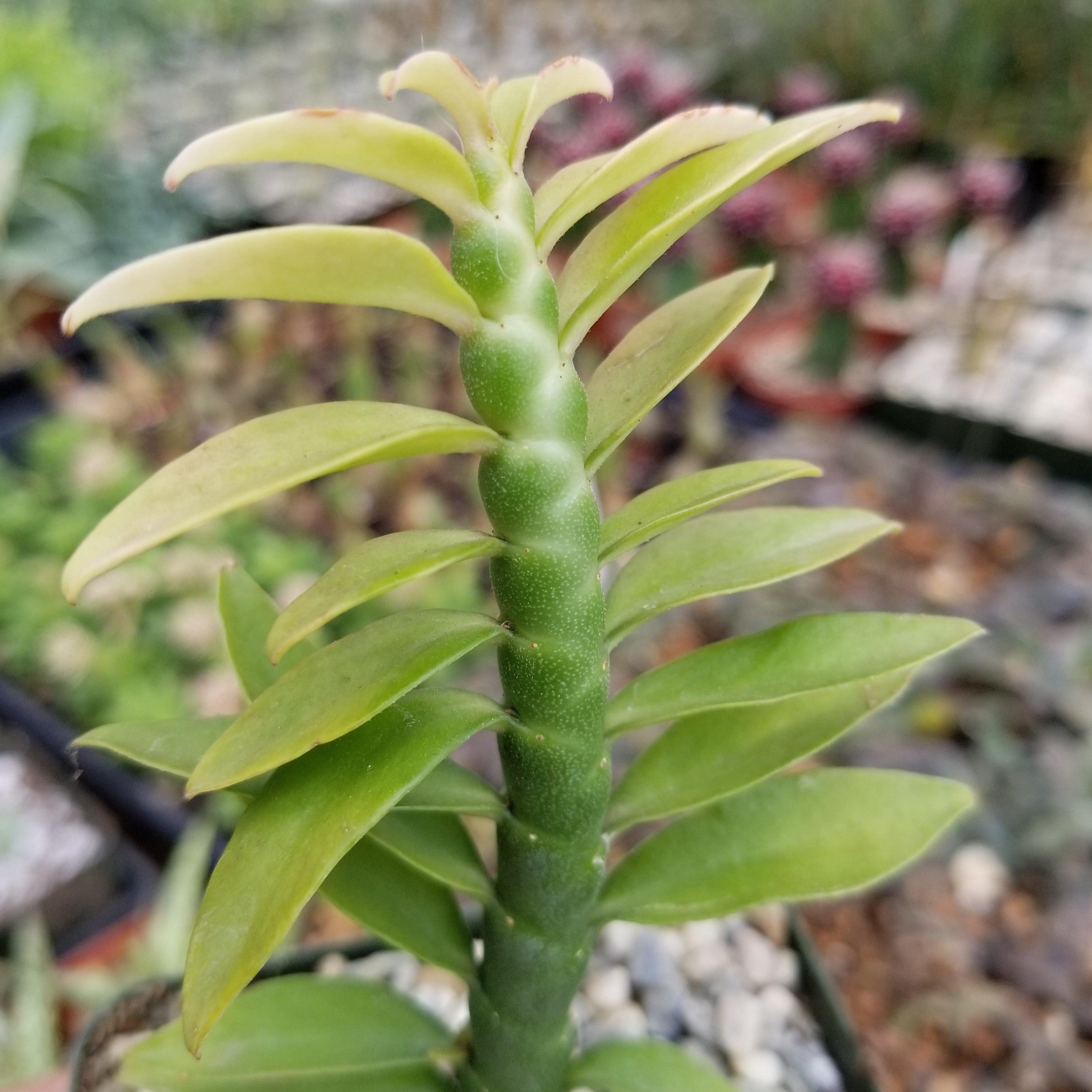

If your space doesn’t get too much sunlight, this plant will only endure for a certain amount of time.

One of the most important needs of the devils backbone plant is sunlight. However, you need to follow a few rules to keep the plant alive, stay healthy, and give the best look possible. Like we mentioned early on, taking care of the devils backbone plant is not exhausting.
#Devils backbone plant how to#
How To Grow the Devil’s Backbone Plant? Short-Term Caring This plant’s sap is toxic for both humans and animals Well-drained, nutrition-rich, not too acidic Tropical Central and North America, Subtropical Central, and North America Redbird flower, devils backbone plant, zigzag plant, fiddle flowerĮuphorbia Tithymaloides (used to be known as Pedilanthus Tithymaloides) Detailed Description Of Devil’s Backbone Plant Common Name For this reason, people who have children or playful animals should consider putting this plant out of their sight or choosing another plant instead. A really important thing to keep in mind is that the devil’s backbone plant’s sap is poisonous for humans and animals. To keep the best shape of this plant, you need to put it in an area with enough sunlight, or it will gradually lean forward to the direction of the sunlight and lose the up straight look. The leaves are lance-shaped, and the flowers can appear in different colors like white, red, and pink. Moreover, this plant also has a fresh and green look to cool our house. People choose the devil’s backbone plant as a houseplant because it does not need constant daily care. The most common size is around two feet, but sometimes, it can even grow up to three feet when reaching maturity time. The botanical name of this plant is Euphorbia Tithymaloides, but it used to be called Pedilanthus Tithymaloides in the past.Įven though this plant lives in the American tropics, it normally stays hardy and grows well in USDA zone nine to ten. What Is A Devil’s Backbone Plant? Overallĭevil’s backbone plant is also known as redbird flower, zigzag plant, or fiddle flower. What Are The Common Pests and Diseases On Devil’s Backbone Plants?.How To Propagate And Repot Devil’s Backbone Plant?.What Are The Factors To Care When Growing Devil’s Backbone Plant?.How To Grow the Devil’s Backbone Plant?.Detailed Description Of Devil’s Backbone Plant.Toxicity: The latex based sap of a Devil’s Backbone plant is caustic so always wear gloves when pruning the plant. Plant Pests: Look out for mealy bugs and spider mites. Soil: Devil’s Backbone plants are very tolerant of poor soil, but it’s best to use a sand based soil that drains well or a cactus mix. Pot Size: Like to be root-bound in a small pot. Fertilizer: Feed monthly in the spring and summer when the plant is actively producing new leaves with a balanced liquid plant food. Temperature: Prefers warm temperatures and does not do well in temperatures below 55 ☏ (12.8° C). Leaves fall off of a Devil’s Backbone plant if the soil gets too dry and the plant gets root rot if the soil stays too wet. During the fall and winter, when the plant is resting, water less. Water when the top few inches of soil have dried out.

Water: Keep the plant slightly moist but not waterlogged. Light: Bright indirect light, but no direct sun. Here are some care tips for a Devil’s Backbone plant. Your plant is called a Devil’s Backbone (Pedilanthus tithymaloides).


 0 kommentar(er)
0 kommentar(er)
